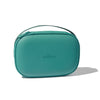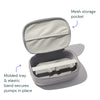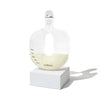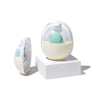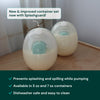Breastfeeding can be a beautiful experience, but it's not without its challenges. One of the most significant struggles for nursing moms is knowing how to clean their breast pumps.
With so many different kinds of pumps, parts to assemble and cleaning methods, how do you keep it all straight? Are there definite do’s and don'ts when it comes to cleaning breast pumps? Whether you’re using a traditional pump or a portable Willow Pump, we have a full breakdown of how to clean it, so you and your baby can stay healthy and happy.
Why Is Cleaning a Breast Pump so Important?
Every time you pump milk, your breast pump comes into contact with your milk’s bacteria and other pathogens. If your breast pump isn't cleaned on a regular basis, these tiny microorganisms can multiply and grow over time.
The more the bacteria grows, the more likely you and your baby will come into contact with it. This exposure increases the risk of infection and illness for both of you.
An unclean breast pump can also contaminate your milk supply. If you pump and save your breast milk for later use, the bacteria can degrade its nutritional value and cause it to spoil. You’ll end up having to toss out the stored milk that you worked so hard to pump.
Not cleaning your breast pump can also shorten the life of the pump itself. Breast pumps are a godsend for moms everywhere, but they can also be expensive. This means you’ll want to keep yours in tip-top shape, especially when you depend on a breast pump to nourish your baby.
By cleaning your breast pump, you prevent the buildup of milk residue. This allows each component to work properly and efficiently for the long term.
It’s important to note that you don’t actually clean the breast pump itself. Pumps come with several parts, such as flanges and bottles. These accessories are what you’ll clean after each use.






